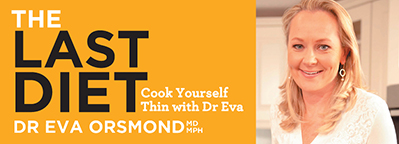What's in a label? The facts behind your food

Dr Eva Orsmond, author of The Last Diet, was back on the radio this week as the Operation Transformation finalist selection process gets under way for 2013. As part of the Dublin Book Festival she’ll be giving a talk on healthy living this Saturday at 11am in Smock Alley Theatre with Juliet Bressan, Brian Colbert and Sylvia Thompson. Entry is free of charge.
Now we know we should always eat fresh food - but sometimes we can’t help reaching for processed products. Some processed foods are healthier than others but it can be hard to know why just by looking at the labels, which generally promise all sorts of healthy benefits. Here Dr Eva Orsmond reveals just what those labels mean...
It would be great if our daily diet could consist of foods that have been prepared fresh from basic ingredients by ourselves rather than pre-packed processed food. In reality, we are just too busy and have other things to do, ‘forcing’ us to eat a certain amount of processed foods. However, this is not an excuse to forget about nutrition. There can be some major differences between food products and it is therefore important that we know how to read the labels. This will help you choose the ‘real’ healthier product with the best overall value, not simply the cheapest product with the loudest claims.
A lot of information on packaging can be confusing or misleading. Claims like ‘low fat’, ‘no added sugar’, ‘gluten free’, ‘high fibre’, etc. need to be backed up and this is done using the nutritional information. Here’s a list of approved health claims to help you read food labels correctly:
Low fat/95% fat free
For a product to be labelled as low fat, it must contain less than 5 g of fat per 100 g of product.
Low in saturated fat
Must have less than 3 g of saturated fat per 100 g of product.
Virtually fat free
Must have minimum 25 per cent less fat than a standard product in its range.
Low sugar
Less than 5 g per 100 g of product.
Sugar free
Does not contain any added or naturally occurring sugar.
No added sugar
No sugar has been added to the product but it contains naturally occurring sugar.
Reduced sugar
Must have minimum 25 per cent less sugar than a standard product in its range.
High fibre
Must contain at least 6 g of fibre per 100 g of product.
Reduced salt
Must have minimum 25 per cent less sodium (salt) than a standard product in its range.
Low calorie/diet
Must have less than 40 calories in 100 g or 100 ml of product.
We're Hiring - Gill Production Assistant
© 2025 M.H. Gill & Co. Unlimited Company